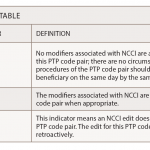The investigators then characterized the functional recovery of the urinary and locomotor systems. Rats that received ISP had a twofold increase in void frequency at 12 weeks post-injury when compared with rats that received control treatment. Moreover, after ISP treatment, the rats had a significant progressive recovery of locomotion that began several weeks after injury. When the investigators tested the injured rats for three distinct behaviors (i.e., micturition, gridwalk and locomotion) using a blinded behavioral tester and a separate blinded treatment administrator, they found that the majority of ISP-treated rats (21 of 26) recovered at least one of the measured behaviors at Week 11.
The investigators were careful to note that ISP treatment did not lead to differences in lesion size, nor did it spare white matter. They concluded that ISP was not neuroprotective. They also did not observe any regenerating corticospinal tract fibers.
The authors suggest that their findings enhance investigators’ understanding of the role of PTPσ in mediating the growth-inhibited state of neurons after spinal cord injury. (posted 1/30/15)
Lara C. Pullen, PhD, is a medical writer based in the Chicago area.
Reference
1. Lang BT, Cregg JM, DePaul MA, et al. Modulation of the proteoglycan receptor PTPs
promotes recovery after spinal cord injury. Nature. 2014. Dec. 3. doi: 10.1038/nature13974. [Epub ahead of print]

